Menus
- In the big country road test: BMW, Ducati, Honda, Kawasaki, KTM, Suzuki, Triumph and Yamaha
- The monumental: BMW K 1300 R
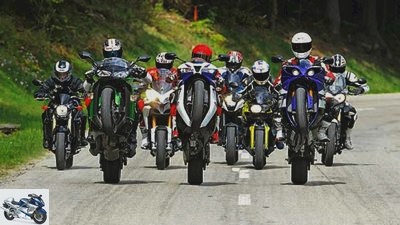
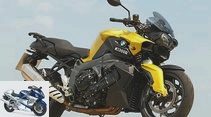

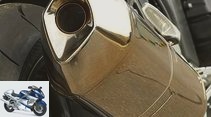
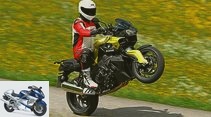
37 photos
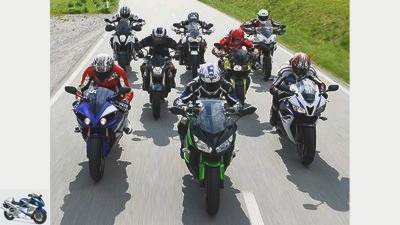
1/37
In comparison: BMW K 1300 R, Ducati Multistrada 1200 S Touring, Honda CBR 600 RR C-ABS, Kawasaki Z 1000 SX Tourer, KTM 990 SM T, Suzuki GSR 750, Triumph Tiger 800 and Yamaha YZF-R1.
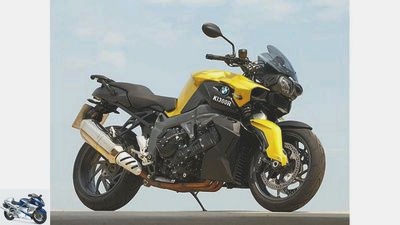
2/37
Test bike: BMW K 1300 R.
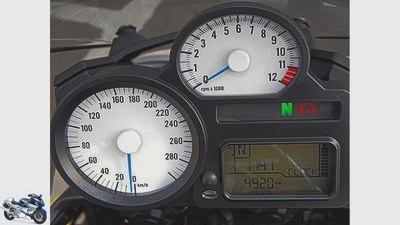
3/37
The cockpit of the BMW K 1300 R..
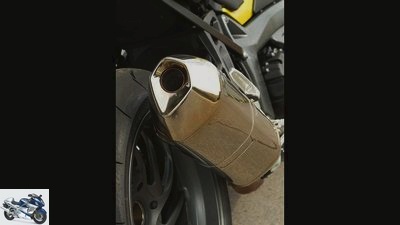
4/37
Test bike: BMW K 1300 R.
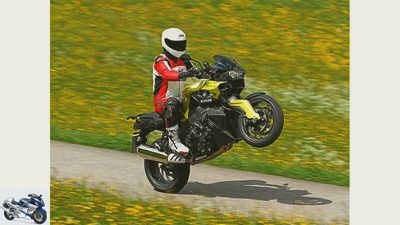
5/37
Test bike: BMW K 1300 R.
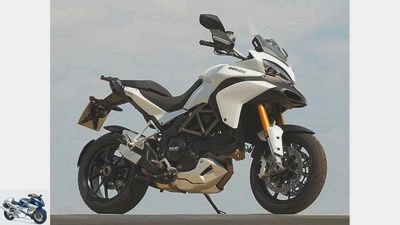
6/37
Test bike: Ducati Multistrada 1200 S Touring.
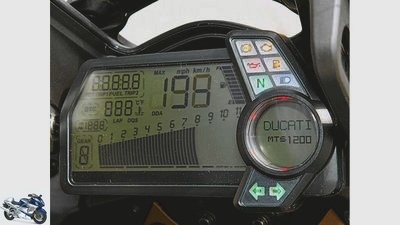
7/37
The cockpit of the Ducati Multistrada 1200 S Touring.

8/37
Test bike: Ducati Multistrada 1200 S Touring.
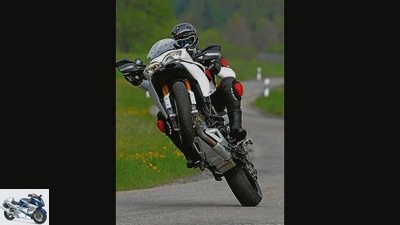
9/37
Test bike: Ducati Multistrada 1200 S Touring.
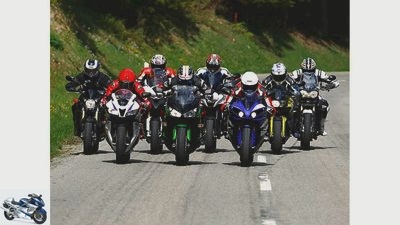
10/37
In comparison: BMW K 1300 R, Ducati Multistrada 1200 S Touring, Honda CBR 600 RR C-ABS, Kawasaki Z 1000 SX Tourer, KTM 990 SM T, Suzuki GSR 750, Triumph Tiger 800 and Yamaha YZF-R1.
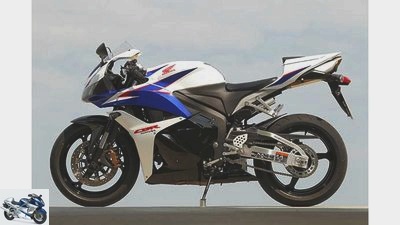
11/37
Test bike: Honda CBR 600 RR C-ABS.
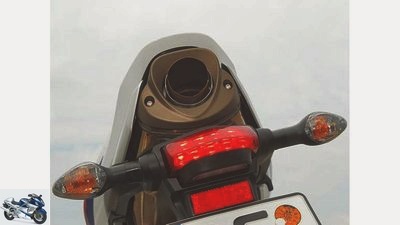
12/37
Test bike: Honda CBR 600 RR C-ABS.

13/37
The cockpit of the Honda CBR 600 RR C-ABS.
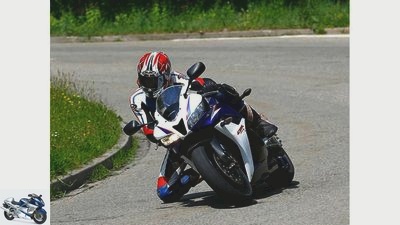
14/37
Test bike: Honda CBR 600 RR C-ABS.

15/37
Test bike: Kawasaki Z 1000 SX Tourer.
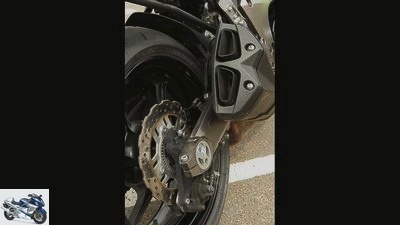
16/37
Test bike: Kawasaki Z 1000 SX Tourer.

17/37
The cockpit of the Kawasaki Z 1000 SX Tourer.
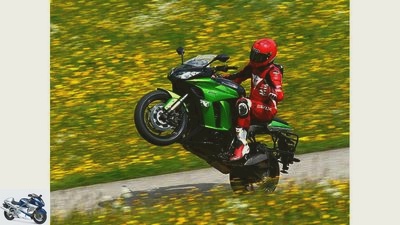
18/37
Test bike: Kawasaki Z 1000 SX Tourer.
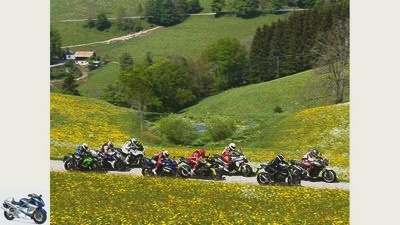
19/37
In comparison: BMW K 1300 R, Ducati Multistrada 1200 S Touring, Honda CBR 600 RR C-ABS, Kawasaki Z 1000 SX Tourer, KTM 990 SM T, Suzuki GSR 750, Triumph Tiger 800 and Yamaha YZF-R1.
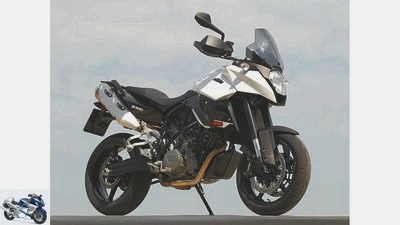
20/37
Test bike: KTM 990 SM T.

21/37
Test bike: KTM 990 SM T.
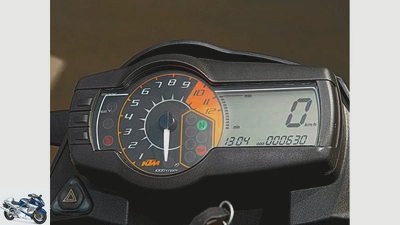
22/37
The cockpit of the KTM 990 SM T.
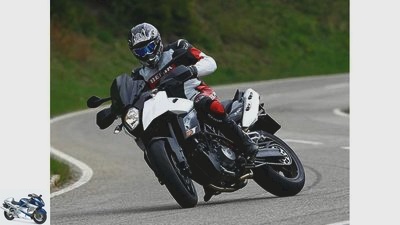
23/37
Test bike: KTM 990 SM T.
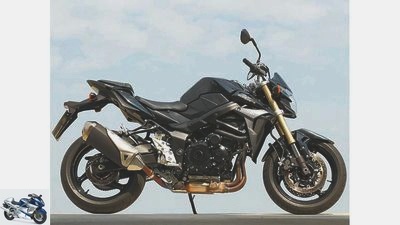
24/37
Test bike: Suzuki GSR 750.
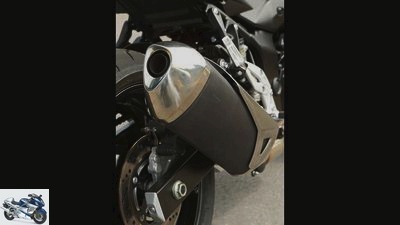
25/37
Test bike: Suzuki GSR 750.
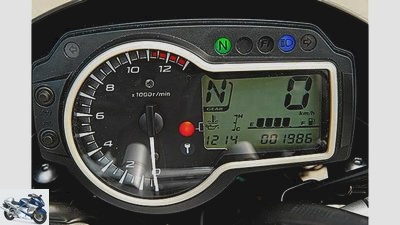
26/37
The cockpit of the Suzuki GSR 750.
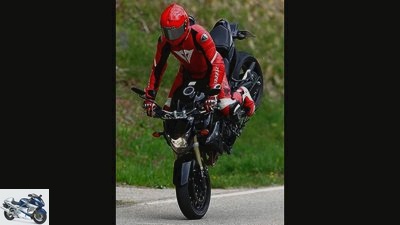
27/37
Test bike: Suzuki GSR 750.
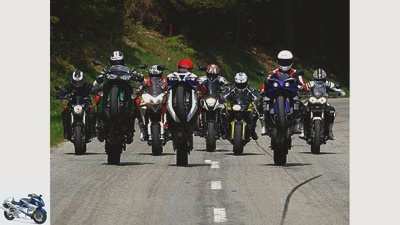
28/37
In comparison: BMW K 1300 R, Ducati Multistrada 1200 S Touring, Honda CBR 600 RR C-ABS, Kawasaki Z 1000 SX Tourer, KTM 990 SM T, Suzuki GSR 750, Triumph Tiger 800 and Yamaha YZF-R1.

29/37
Test bike: Triumph Tiger 800.
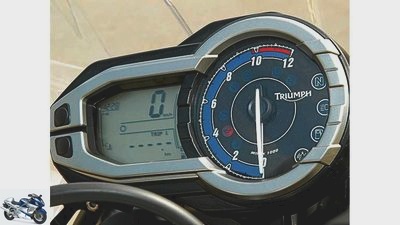
30/37
The cockpit of the Triumph Tiger 800.
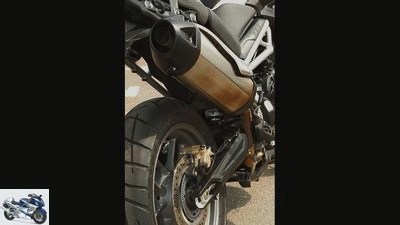
31/37
Test bike: Triumph Tiger 800.

32/37
Test bike: Triumph Tiger 800.
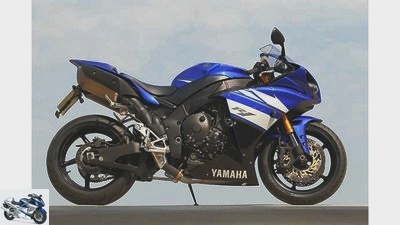
33/37
Test bike: Yamaha YZF-R1.
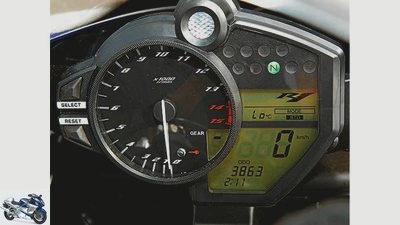
34/37
The cockpit of the Yamaha YZF-R1.
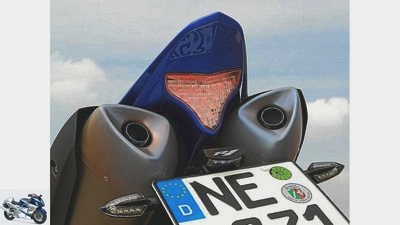
35/37
Test bike: Yamaha YZF-R1.
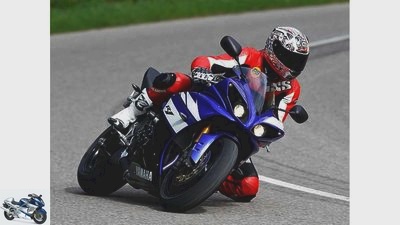
36/37
Test bike: Yamaha YZF-R1.
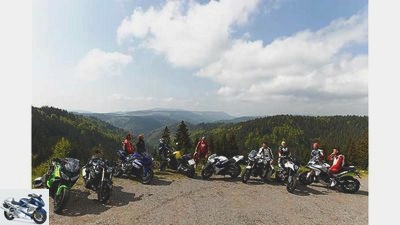
37/37
In comparison: BMW K 1300 R, Ducati Multistrada 1200 S Touring, Honda CBR 600 RR C-ABS, Kawasaki Z 1000 SX Tourer, KTM 990 SM T, Suzuki GSR 750, Triumph Tiger 800 and Yamaha YZF-R1.
Test: eight bikes for the country road
In the big country road test: BMW, Ducati, Honda, Kawasaki, KTM, Suzuki, Triumph and Yamaha
Content of
If everyone dreams of one, the perfect day beckons. The philosophies may be different, unbridled fun unites us. Eight drivers, the sun, the Black Forest and eight motorcycles in the sportiest country road test of the year.
Between "Hello" and "bye" real life takes place. Namely, when eight like-minded people get together – without much chatter. All it takes are eight motorcycles and a passion, plus the road, the Black Forest – Hallelujah!
S.o A perfect day starts with a short one "Hello", before the troops devoutly circling the test motorcycles like Mecca pilgrims. Tense anticipation is in the air. It is important to find out which type of motorcycle has the greatest magic on the most varied of curved country roads, which emphatically stimulates the pleasure center and in the evening when "bye" will have the biggest smile chiseled on their faces.
Will it be the BMW K 1300 R? This brutal naked bike with brutal four-cylinder power. Or the Ducati Multistrada 1200 S? The Italian diva with a powerful twin and complex electronics. How is the Honda CBR 600 RR doing? As a carburetor generation at that time still a country road all-rounder, meanwhile exotic in the woods and fields. Can the new Kawasaki Z 1000 SX tear open the asphalt properly? With the power block of the Z 1000, the green of course has the best prerequisites for winning the test. But does it go to the KTM 990 SM T after all? After all, the twin can do a lot and a slightly touristy supermoto can’t be that bad on the country road. Maybe the Suzuki GSR 750 can strike? The GSX-R 750 is considered a powerful country road weapon among sports fans, and only because it is bare here … But the new Triumph Tiger 800 should also score points? Big narrow front wheel, relaxed posture and the three-cylinder beat from the Streety – that promises a lot. And then the R1! Well, long since overshadowed by the majority of the competition on the racetrack, the powerful and emotionally charged humming top should hold up the athlete flag in the open air.
Every bum quickly found a saddle. After all, we don’t want to set up a discussion group. Your fingers itches a lot, your senses are wide open and your heartbeat signals: We are ready for this perfect day.
The monumental: BMW K 1300 R
In the test: BMW K 1300 R
Sille is crazy about the BMW: "You can see the power in that, guys." The passionate hard enduro driver is in top shape and craves a kick. That is also sorely needed, because even with the special electronic bells and whistles ESA and ABS, BMW only wants to put real experts on the tank. Even in the tight sport mode, which is best suited to researching country roads, BMW demands active participation from the pilot if he wants to drive the K 1300 out of the Taurus spirit. Although the extremely handy Conti Sport Attack suggests willing turn-in, the K becomes visibly nervous when there is increased pressure on the front wheel. At the same time you can feel the mass of the large motorcycle in the handlebars, that is to say: the BMW pushes outwards. Sille has his hands full to circling the Bavarian woman through the swarm of curves with properly opened throttle valves. Resistance constantly wants to be broken. In long arcs, on the other hand, the long wheelbase pays off again; when folded down appropriately, the K lies at an angle and does not stand up even when you brake. "The feeling for the front is a bit nebulous", Sille confirms the impressions of the fellow testers.
But the Telelever inspires when anchoring hard. The tendency of the K to pitch is almost zero when decelerating and gives her incredibly short braking distances with the great ABS. "The fact that you can’t apply the brake sensitively as usual because of the brake booster is strange at first", notes the tester. But once you get the hang of it, you can enjoy the vehement delay.
As in the power of the four-cylinder. Once the long way and the somewhat high resistance of the throttle grip have been overcome, the K-motor takes off like a bear. The little trailer between 4000 rpm and 5000 rpm is not worthy of a 1300 engine, but Thor swings the hammer over it – and how! Then the cranked stubs and the stoic straight line of the BMW explain themselves.
In push mode, however, the test bike got rough vibrations around 6000 rpm, which made the whole fork tremble – really ugly. The over-all character of the BMW? A long dugout canoe with the outboard motor of a racing boat – straight ahead is stunning, winding curves is something of a fitness booth.
Technical specifications
drive
Four-cylinder in-line engine, four valves / cylinder, 127 kW (173 HP) at 9250 / min *, 140 Nm at 8250 / min *, 1293 cm³, bore / stroke: 80.0 / 64.3 mm, compression ratio: 13.0 : 1, ignition / injection system, 46 mm throttle valves, hydraulically operated multi-disc oil bath clutch, six-speed gearbox, G-Kat, cardan
3rd place for the BMW K 1300 R..
landing gear
Light alloy bridge frame, steering head angle: 60.4 degrees, caster: 104.4 mm, wheelbase: 1585 mm, trailing arm guided telescopic fork, Ø fork inner tube: 47 mm, electrically adjustable in spring base, rebound and compression. Central spring strut with deflection, electrically adjustable in spring base, rebound and compression. Suspension travel front / rear: 115/135 mm
Wheels and brakes
Cast light alloy wheels, 3.50 x 17 “/ 6.00 x 17”, front tires: 120/70 ZR 17, rear: 190/55 ZR 17, test tires: Conti Sport Attack, “- / C”, 320 mm double disc brakes with four pistons -Fixed calipers at the front, 265 mm single disc with two-piston floating caliper at the rear
measurements and weight
Length / width / height: 2228/856/1095 mm, seat / handlebar height: 820/1000 mm, handlebar width: 715 mm, 252 kg fully fueled, v./h .: 48.9 / 51.1%
Rear wheel power in last gear
119 kW (161 PS) at 243 km / h **
consumption
Fuel type: Super unleaded. Average test consumption: 6.9 liters / 100 km, tank capacity 19.0 liters, range: 275 km
Base price
16,320 euros (plus ancillary costs, including ESA, ABS, automatic switch etc.)
* Manufacturer information ** according to the vehicle registration certificate




37 photos
Pictures: Test: Eight bikes for the country road
To home page

fact
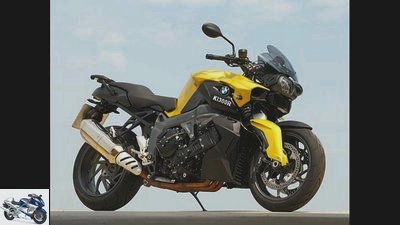
fact
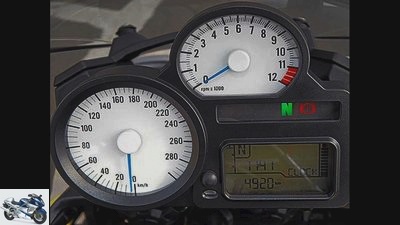
fact
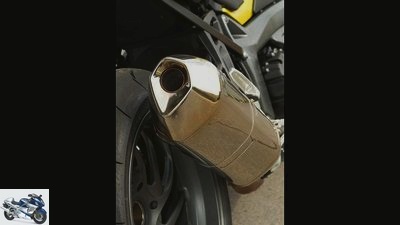
fact
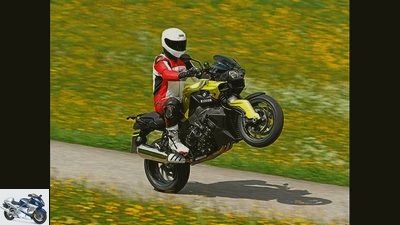
fact
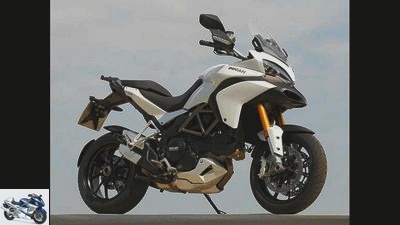
fact

fact
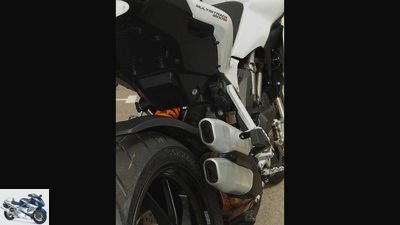
fact
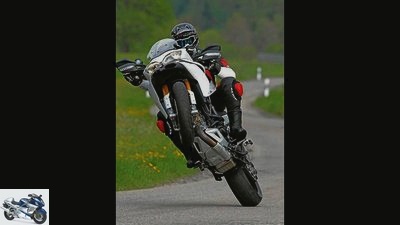
fact
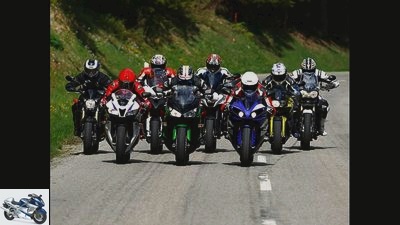
fact
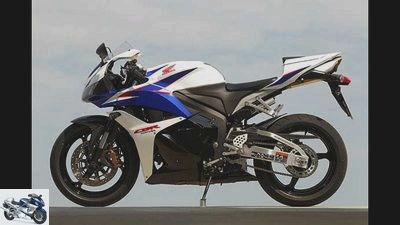
fact
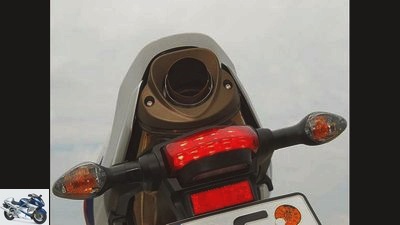
fact
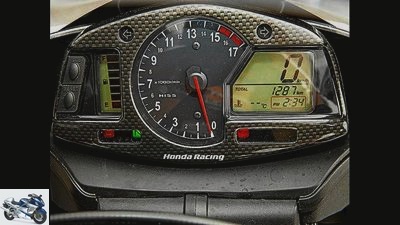
fact
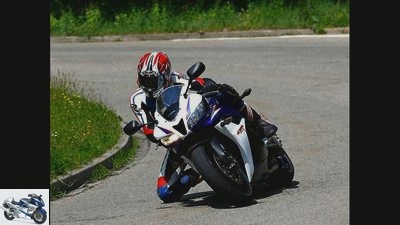
fact
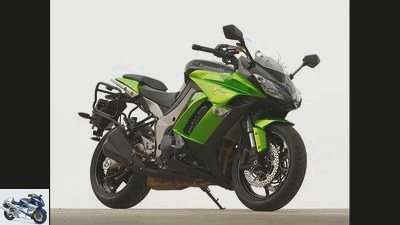
fact
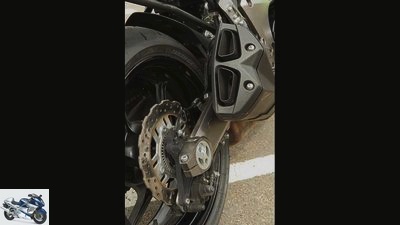
fact
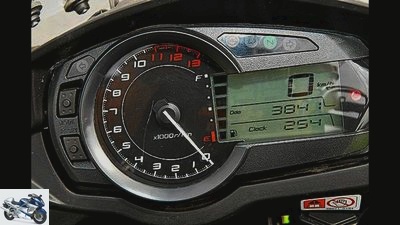
fact
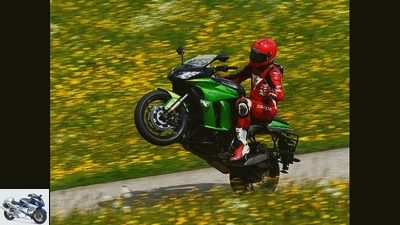
fact
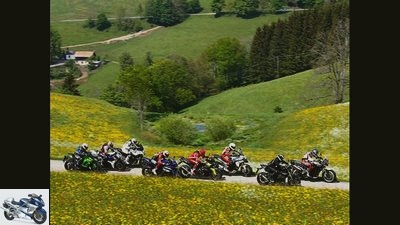
fact
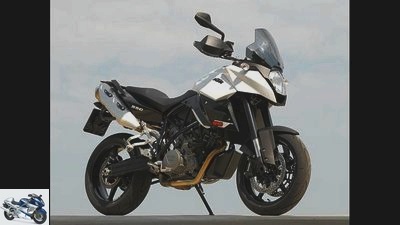
fact
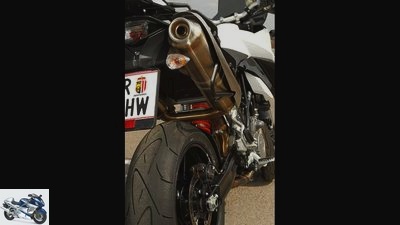
fact
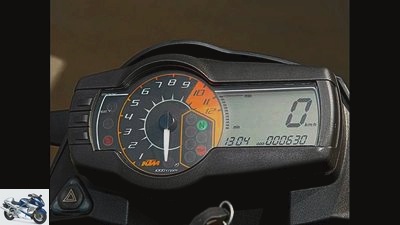
fact
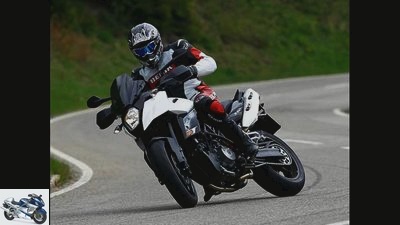
fact
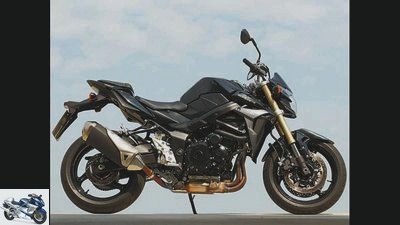
fact
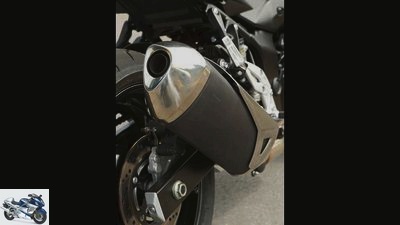
fact
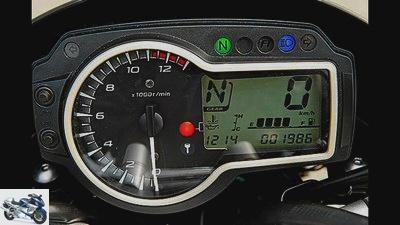
fact
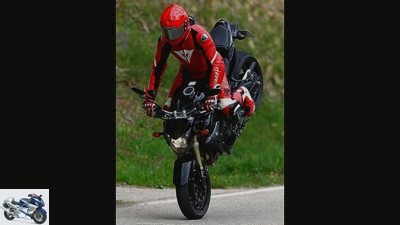
fact
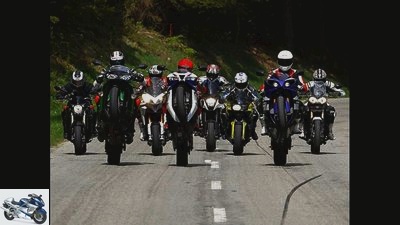
fact
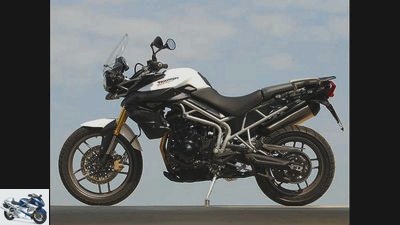
fact
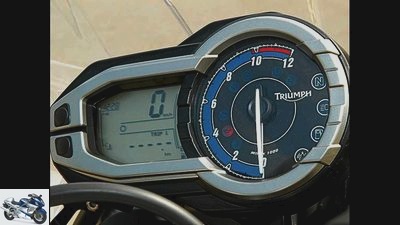
fact

fact
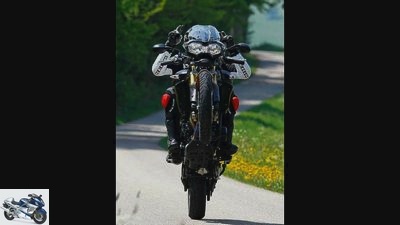
fact

fact
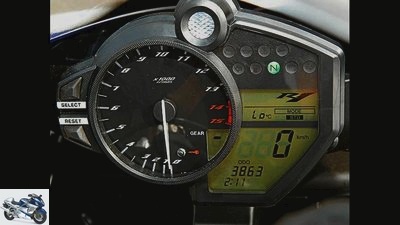
fact
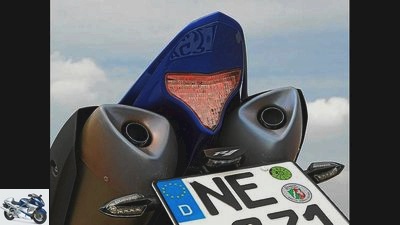
fact
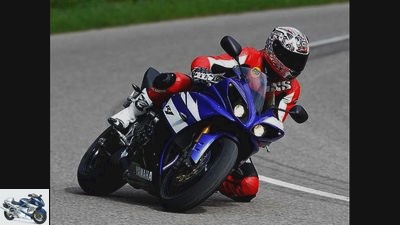
fact
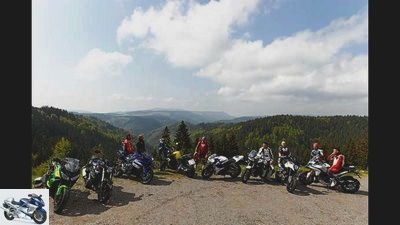
fact
The all-rounder: Ducati Multistrada 1200 S
In the test: Ducati Multistrada 1200 S.
Fabian does not give the Multistrada out of his hands. In his private life, the guest tester chases a Kawasaki ZX-10R across the race track, but the Ducati has done it to him. It offers even the tall racer a comfortable workplace and carries loads of athlete genes. A fabulous combination! Example engine: measured 147 HP top-end power and 120 Nm torque are unparalleled for a long-legged all-rounder. The way the Italian releases her power also takes your breath away. Without jerking or hitting the chain, it delivers a fat punch just above 2000 rpm and powers evenly through the rev range. From 6000 rpm, the 1200 even adds a few more briquettes. The party doesn’t end until just over 10,000 rpm, when the limiter cuts out the power of the modified drive from the Superbike 1198. The great V2 hammering with the very sophisticated engine running makes every ride a first-class experience.
In the S version tested, the Ducati driver can adjust the engine characteristics using four different modes. PS recommendation: the sport mode. As in the setting "Touring" the Duc offers full power here, but accelerates a little more directly.
The different modes of the DTC system also influence the coordination of the spring elements. On not too wrinkled asphalt, the sport setting is also the first choice. The electronics change the damping direction via servomotors – full attack! Very sporty natures make the chassis a little tighter using the buttons on the left handlebar fitting. This makes the all-rounder even more satisfied when hunting. If you are wrong with the setup, you can always fall back on the factory settings.
For a bike with long suspension travel, the Multistrada angles surprisingly precisely. The 17-inch chassis in combination with the original Pirelli Scorpion Trail tires, in the 190 dimension at the rear, certainly contributes to this. This means that the Duc is not super handy, but remains remarkably stable in an inclined position and builds up excellent grip. The traction control ensures that it does not tear off. On the dry road and level three of the DTC, courageous pilots shoot out of the corners with controlled slides – phenomenal! The ABS, which was re-tuned a few months ago, also fits this driving style. Although it now allows a slightly rising rear wheel, that is always better than missing the turn-in point because of a system that regulates much too early. So it’s no wonder that Fabian doesn’t let anyone join the Multistrada.
Technical specifications
drive
Two-cylinder 90 degree V-engine, four valves / cylinder, 109 kW (148 PS) at 9250 / min *, 119 Nm at 7500 / min *, 1198 cm³, bore / stroke: 106.0 / 67.9 mm , Compression ratio: 11.5: 1, ignition / injection system, 64 mm throttle valves, hydraulically operated multi-disc oil bath clutch, six-speed gearbox, G-Kat, chain
The test winner: Ducati Multistrada 1200 S.
landing gear
Steel tubular frame, steering head angle: 65.0 degrees, caster: 104 mm, wheelbase: 1530 mm, upside-down fork, Ø fork inner tube: 48 mm, electrically adjustable in spring base, rebound and compression stage. Central spring strut with deflection, electrically adjustable in spring base, rebound and compression. Suspension travel front / rear: 170/170 mm
Wheels and brakes
Forged light alloy wheels, 3.50 x 17 “/ 6.00 x 17”, front tires: 120/70 ZR 17, rear: 190/55 ZR 17, test tires: Pirelli Scorpion Trail, 320 mm double disc brakes with radially screwed four-piston fixed calipers at the front, 245 mm single disc with two-piston fixed caliper at the rear
measurements and weight
Length / width / height: 2200/910/1400 mm, seat / handlebar height: 840/1120 mm, handlebar width: 830 mm, 234 kg fully fueled, v./h .: 49.7 / 50.3%
Rear wheel power in last gear
99 kW (135 PS) at 240 km / h **
consumption
Fuel type: Super unleaded. Average test consumption: 7.7 liters / 100 km, tank capacity 20.0 liters, range: 243 km
Base price
18,250 euros (plus additional costs)
* Manufacturer information ** according to the vehicle registration certificate




37 photos
Pictures: Test: Eight bikes for the country road
To home page

fact

fact

fact

fact

fact

fact

fact

fact

fact

fact

fact

fact

fact

fact

fact

fact

fact

fact

fact

fact

fact

fact

fact

fact

fact

fact

fact

fact

fact

fact

fact

fact

fact

fact

fact

fact

fact
The barrel organ: Honda CBR 600 RR C-ABS
In the test: Honda CBR 600 RR C-ABS.
Things are tight on the Supersport Honda. The CBR folds the pilot’s legs almost brutally. That’s not a reproach, after all, the little Honda is a thoroughbred super sports car – deep, narrow handlebars and high pegs. That just requires deductions in the country road note. The fairing is also designed for racing. Only with the chin on the tank is the pilot somewhat protected from the wind by the flat shield. Compared to the other rather large-caliber test candidates, the Honda looks really very petite.
This also has its positive sides: No other motorcycle whizzes around the corner as nimbly as the CBR. Already aiming at a curve is enough and the 600 folds into an inclined position. So it’s all the more gratifying that it is still very full and stays clean on course even with bumps and braking maneuvers in an inclined position. The high-quality, fully adjustable spring elements are partly responsible for this. The fork in particular is a piece of cream. She speaks well, works transparently and gives the pilot very good feedback. The shock absorber also works well, but in the case of our test motorcycle, it made a minor adjustment mistake: The rebound stage is a little underdamped and had to be completely closed for the sporty country road trip.
Probably the biggest plus point of the small Honda is its brake. Combined ABS works great on country roads, regulates late and keeps the rear wheel stable even when the brake lever is pulled hard. The controllability and braking effect of the CBR brake system are also exemplary.
The engine characteristics, on the other hand, don’t actually fit off the racetrack. In the meantime, the super athletes are so trimmed for racing that a normal registration almost makes no sense. The CBR only lets its horses out of the stable at high speeds. This is particularly noticeable at the exit of the curve, where the Honda laboriously torments its way up to the 8000 mark before it noticeably marches forward. There, the significant load changes that tend to mess up the line when you apply the gas are also annoying.
Technical specifications
drive
Four-cylinder in-line engine, four valves / cylinder, 88 kW (120 PS) at 13,500 / min *, 66 Nm at 11,250 / min *, 599 cm³, bore / stroke: 67.0 / 42.5 mm, compression ratio: 12 , 2: 1, ignition / injection system, 40 mm throttle valves, mechanically operated multi-disc oil bath clutch, six-speed gearbox, G-Kat, chain
4th place for the Honda CBR 600 RR C-ABS.
landing gear
Light alloy bridge frame, steering head angle: 66.5 degrees, caster: 98 mm, wheelbase: 1375 mm, upside-down fork, Ø fork inner tube: 41 mm, adjustable spring base, rebound and compression level. Central spring strut with deflection, adjustable in spring base, rebound and compression. Suspension travel front / rear: 120/135 mm
Wheels and brakes
Light alloy cast wheels, 3.50 x 17 “/5.50 x 17”, front tires: 120/70 ZR 17, rear: 180/55 ZR 17, test tires: Bridgestone BT 015 “F / E”, 310 mm double disc brakes with radially screwed Four-piston fixed calipers at the front, 220 mm single disc with single-piston floating caliper at the rear
measurements and weight
Length / width / height: 2010/685/1105 mm, seat / handlebar height: 810/810 mm, handlebar width: 645 mm, 197 kg with a full tank, v./h .: 50.9 / 49.1%
Rear wheel power in last gear
80 kW (109 PS) at 236 km / h **
consumption
Fuel type: Super unleaded. Average test consumption: 5.8 liters / 100 km, tank capacity 18.0 liters, range: 312 km
Base price
12790 Euro (plus Nk, incl. C-ABS)
* Manufacturer information ** according to the vehicle registration certificate




37 photos
Pictures: Test: Eight bikes for the country road
To home page

fact

fact

fact

fact

fact

fact

fact

fact

fact

fact

fact

fact

fact

fact

fact

fact

fact

fact

fact

fact

fact

fact

fact

fact

fact

fact

fact

fact

fact

fact

fact

fact

fact

fact

fact

fact

fact
The strong character: Kawasaki Z 1000 SX Tourer
In the test: Kawasaki Z 1000 SX Tourer.
The best thing about the fully wired version of the Z 1000 is definitely its powerful motor. The 1043 cm³ engine pushes forward vehemently with the slightest turn of the throttle, regardless of the speed. This is also proven by the pulling power. When sprinting from 50 to 150 km / h in last gear, the Z plays with 8.2 seconds in the same league as its much stronger competitors, the Yamaha R1 and the BMW K 1300 R..
What the values cannot convey is the great sound of the four-cylinder. It roars, growls and roars and turns the sports tourer into a real character bike. However, the clearly noticeable vibrations of the wild fellow are annoying on longer tours.
When it comes to handling, the Kawa is shirt-sleeved. Cold tires, braking maneuvers, bumps: the Z 1000 SX never misses an opportunity to defend itself against the pilot’s attempts to turn or to stand up in a lean position. Even when the road surface is perfectly flat, it only holds the line with a little force in the curve.
When decelerating, the pilot with the Kawa has an easy time of it. The sporty, snappy surfaces and the ease with which the four-piston system can be adjusted make it possible to compress the 230-kilo sports tourer effortlessly and precisely. The ABS works well over a wide range, but the rear wheel rises during extremely hard braking maneuvers from over 100 km / h.
In return, the bike stays clean on the ground on bumpy slopes – provided that the suspension setting is correct: For sporty driving, the rebound stage of the shock absorber must be completely closed. Then the Z is stable and full. The tuning of the fork is already convincing in series production. She also speaks well. Only the feedback should be a little better.
If the fields are a little quieter and the speeds higher, the Kawasaki benefits from its very good wind protection. The large, adjustable disc provides good coverage, especially when you are in a crouched driving position. However, the narrow knee angle becomes uncomfortable in the long run on long stretches of the motorway.
Technical specifications
drive
Four-cylinder in-line engine, four valves / cylinder, 101.5 kW (138 HP) at 9600 rpm *, 110 Nm at 7800 rpm *, 1043 cm³, bore / stroke: 77.0 / 56.0 mm, compression ratio: 11 , 8: 1, ignition / injection system, 38 mm throttle valves, mechanically operated multi-disc oil bath clutch, six-speed gearbox, G-Kat, chain
5th place for the Kawasaki Z 1000 SX Tourer.
landing gear
Light metal central tube frame, steering head angle: 65.5 degrees, caster: 102 mm, wheelbase: 1440 mm, upside-down fork, Ø fork inner tube: 41 mm, adjustable in spring base, rebound and compression. Central spring strut with deflection, adjustable in spring base and rebound. Suspension travel front / rear: 120/138 mm
Wheels and brakes
Light alloy cast wheels, 3.50 x 17 “/ 6.00 x 17”, front tires: 120/70 ZR 17, rear: 190/50 ZR 17, test tires: Bridgestone BT 016 “BB”, 300 mm double disc brakes with radially screwed four-piston Fixed calipers at the front, 250 mm single disc with single-piston floating caliper at the rear
measurements and weight
Length / width / height: 2105/790/1230 mm, seat / handlebar height: 820/1020 mm, handlebar width: 700 mm, 231 kg fully fueled, v./h .: 50.8 / 49.2%
Rear wheel power in last gear
91 kW (124 PS) at 219 km / h **
consumption
Fuel type: Super unleaded. Average test consumption: 7.1 liters / 100 km, tank capacity 19.0 liters, range: 267 km
Base price
13 295 Euro (plus ancillary costs)
* Manufacturer information ** according to the vehicle registration certificate




37 photos
Pictures: Test: Eight bikes for the country road
To home page

fact

fact

fact

fact

fact

fact

fact

fact

fact

fact

fact

fact

fact

fact

fact

fact

fact

fact

fact

fact

fact

fact

fact

fact

fact

fact

fact

fact

fact

fact

fact

fact

fact

fact

fact

fact

fact
The lively one: KTM 990 SM T
In the test: KTM 990 SM T.
KTM fans have to be brave now. Reason: The 990 SM T will not win this test. On the contrary and to the general amazement of the test crew, it ends up relatively far behind. Why? This cannot be determined by a single criterion. A number of little things add up, which is why the Austrian can only leave the Suzuki GSR behind.
Even with the real cream of the crop, the engine, the travel-ready Supermoto loses points. This is most noticeable in the load change behavior. The twin almost jumps on the gas, which makes it difficult to accelerate gently when exiting a curve. Greetings from the low flywheel mass of the crank drive. But once on the train, the KTM shoots up the speed ladder like no other. How greedy the V2 launches electrifies again and again. However, this liveliness takes its toll at the gas station. With a consumption of 7.7 liters, the SM T is one of the thirstiest candidates in the test field.
When it comes to the chassis, the KTM shines with the second best handling behind the super sporty Honda CBR 600 RR. A poem of how light-footed the Austrian arrows in the corners. For some testers, she turns it almost too nervously, but the enthusiasts in the team are clearly in the majority. Unfortunately, the long suspension travel dilutes the feeling for the road a bit, and the Supermoto is restless in very fast arcs. One reason for this is the underdamped rebound stage of the shock absorber, which occasionally causes the rear to swing a little. In addition, the fork and shock absorber could respond more sensitively for a bike in this price range.
The rest is quickly told. The performance of the brake is okay, the effectiveness and controllability are at a high level. The stoppers only require a lot of manual force when braking. The ABS regulates late and sensitively, but as with many long-legged people, it allows a rising tail.
The pilot sits enthroned on the SM T, the ergonomic triangle of bench, handlebars and seat guarantees relaxed and active driving fun.
Despite its obvious weaknesses, the KTM is a first-rate joke. In any case, disdainful scores roll off real fans like raindrops on a freshly polished tank. OK then.
Technical specifications
drive
Two-cylinder 75-degree V-engine, four valves / cylinder, 85 kW (116 PS) at 9000 / min *, 97 Nm at 7000 / min *, 1000 cm³, bore / stroke: 101.0 / 62.4 mm , Compression ratio: 11.5: 1, ignition / injection system, 48 mm throttle valves, hydraulically operated multi-plate oil bath clutch, six-speed gearbox, G-Kat, chain
7th place for the KTM 990 SM T.
landing gear
Steel tubular space frame, steering head angle: 65.6 degrees, caster: 109 mm, wheelbase: 1505 mm, upside-down fork, Ø fork inner tube: 48 mm, adjustable in spring base, rebound and compression level. Central spring strut adjustable in spring base, rebound and compression stage. Suspension travel front / rear: 160/180 mm
Wheels and brakes
Cast light alloy wheels, 3.50 x 17 “/5.50 x 17”, front tires: 120/70 ZR 17, rear: 180/55 ZR 17, test tires: Conti Sport Attack, 305 mm double disc brakes with radially screwed four-piston fixed calipers at the front, 240 mm single disc with two-piston floating caliper at the rear
measurements and weight
Length / width / height: 2100/890/1360 mm, seat / handlebar height: 850/1140 mm, handlebar width: 750 mm, 218 kg fully fueled, v./h .: 48.9 / 51.1%
Rear wheel power in last gear
81 kW (110 PS) at 221 km / h **
consumption
Fuel type: Super unleaded. Average test consumption: 7.7 liters / 100 km, tank capacity 19.0 liters, range: 247 km
Base price
12595 Euro (plus additional costs)
* Manufacturer information ** according to the vehicle registration certificate




37 photos
Pictures: Test: Eight bikes for the country road
To home page

fact

fact

fact

fact

fact

fact

fact

fact

fact

fact

fact

fact

fact

fact

fact

fact

fact

fact

fact

fact

fact

fact

fact

fact

fact

fact

fact

fact

fact

fact

fact

fact

fact

fact

fact

fact

fact
The basis: Suzuki GSR 750
In the test: Suzuki GSR 750.
It might be a bit unfair to let the GSR compete against this pack. But as mentioned at the beginning, the 750 engine in the GSX-R is a universally recognized leader on the country road, a bare counterpart long overdue. And the GSR really isn’t doing it badly. It accelerates wonderfully smoothly and develops its power very evenly. However, the four-cylinder should have more punch in the lower speed range. Although the GSR does not need the speeds of the CBR 600 RR, gearshifting is also required for proper thrust – fortunately no problem thanks to the very easy-to-use transmission. If the speed is right, the GSX engine shows its sporty ambitions, but accompanied by sensitive vibrations.
On the other side of the acceleration scale, things look less rosy: The GSR does not yet have ABS – a no-go in this vehicle class. A variant with brake assist will only follow in late summer. The fact that the brake pads in the four-piston floating calipers only bite the discs very bluntly doesn’t make matters any better. At least the GSR brake can be dosed well.
On the other hand, there is nothing to complain about in curves, apart from a slight pitching moment when braking. Despite the somewhat indirect steering feel, the Suzi can be thrown into the corner with precision and little hand force, behaves wonderfully neutral when turning and follows the targeted line neatly when tilted. The non-adjustable fork provides decent feedback, but should be a bit more sensitive. This also applies to the shock absorber, which also has to do without adjustable damping and only has an adjustable spring base.
The fact that the Suzuki cannot hold a candle to the rest of the test field in terms of points as well as subjectively is due not least to the sparse equipment. In addition to the non-adjustable chassis, it brakes with cheap floating saddles. The steel box swingarm and the cheap chain tensioner are not convincing either. Suzuki tried to keep the GSR as inexpensive as possible – which was only partially possible given the 8290 euros without ABS.
Technical specifications
drive
Four-cylinder in-line engine, four valves / cylinder, 78 kW (106 PS) at 10,000 rpm *, 80 Nm at 9000 rpm *, 749 cm³, bore / stroke: 72.0 / 46.0 mm, compression ratio: 12, 3: 1, ignition / injection system, 32 mm throttle valves, mechanically operated multi-disc oil bath clutch, six-speed gearbox, G-Kat, chain
The red lantern for the Suzuki GSR 750.
landing gear
Steel bridge frame, steering head angle: 64.75 degrees, caster: 102 mm, wheelbase: 1450 mm, upside-down fork, Ø fork inner tube: 41 mm, adjustable in spring base. Central spring strut with deflection adjustable in the spring base. Suspension travel front / rear: 120/135 mm
Wheels and brakes
Light alloy cast wheels, 3.50 x 17 “/5.50 x 17”, front tires: 120/70 ZR 17, rear: 180/55 ZR 17, test tires: Bridgestone BT 016 “EE”, 310 mm double disc brakes with two-piston Floating calipers at the front, 240 mm single disc with single-piston floating caliper at the rear
measurements and weight
Length / width / height: 2135/910/1213 mm, seat / handlebar height: 820/1010 mm, handlebar width: 700 mm, 211 kg fully fueled, v./h .: 50.4 / 49.6%
Rear wheel power in last gear
71.5 kW (97 PS) at 212 km / h **
consumption
Fuel type: Super unleaded. Average test consumption: 6.3 liters / 100 km, tank capacity 17.5 liters, range: 277 km
Base price
8290 Euro (plus additional costs)
* Manufacturer information ** according to the vehicle registration certificate




37 photos
Pictures: Test: Eight bikes for the country road
To home page

fact

fact

fact

fact

fact

fact

fact

fact

fact

fact

fact

fact

fact

fact

fact

fact

fact

fact

fact

fact

fact

fact

fact

fact

fact

fact

fact

fact

fact

fact

fact

fact

fact

fact

fact

fact

fact
The balanced one: Triumph Tiger 800
In the test: Triumph Tiger 800.
Like its engine donor, Street Triple, the Tiger is simply at home on the country road. Not with the same claim, you have to be clear about that. With the connoisseur attitude you get damn close to the spirit of the tiger. One or the other brisk lap over the country is easy to do with the motorcycle. Although the 675 triple bored to exactly 799 cubic and nominally 95 hp engine looks poor compared to the long-legged competitors from Ducati and KTM, but on the extended test lap it still won sympathy points. Not because it is bursting with performance, but because it delivers it in a linear manner and runs silky smooth and almost vibration-free. The only thing that can be criticized for the engine is its load change reactions. In the overall picture, the triple paired with the handling of the Tiger results in a coherent concept.
The Triumph embeds its pilot very relaxed behind the wide handlebar, which invites you to cool street surfing. It does not stand up, lies full in the curve, the spring elements – none of which are adjustable – respond properly and the windshield with the small disc is also a pleasure to take with you. Sounds like loose and flaky? I agree! The 800 tiger can’t do more than that. Even the footrests are positioned for a relaxed sitting posture and are not attached for eventful inclines.
In addition, there is too much movement in the chassis for very sporty attacks and the 19-inch front wheel reports too indistinctly about the connection between road and rubber for wild slamming. This fact is certainly also due to the somewhat puny-looking front brake, which acts more gently than snappy and thus helps prevent the narrow front Pirelli Scorpion from slipping away. Incidentally, the ABS is not at a sensational level, but at a good level.
It has long been known that Triumph transmissions are not among the smoothest things the motorcycle world has produced. On our test machine, the clutch also engaged very early, but this could be corrected using the knurled screw.
Technical specifications
drive
Three-cylinder in-line engine, four valves / cylinder, 70 kW (95 PS) at 9300 rpm *, 79 Nm at 7850 rpm *, 799 cm³, bore / stroke: 74.0 / 61.9 mm, compression ratio: 11.1 : 1, ignition / injection system, 44 mm throttle valves, mechanically operated multi-plate oil bath clutch, six-speed gearbox, G-Kat, chain
6th place for the Triumph Tiger 800.
landing gear
Steel tubular space frame, steering head angle: 66.3 degrees, caster: 86 mm, wheelbase: 1555 mm, upside-down fork, Ø fork inner tube: 43 mm, not adjustable. Central spring strut with deflection, adjustable in the spring base. Suspension travel front / rear: 180/170 mm
Wheels and brakes
Light alloy cast wheels, 2.50 x 19 “/4.25 x 17”, front tires: 100/90 -19, rear: 150/70 R 17, test tires: Pirelli Scorpion Trail, 308 mm double disc brakes with two-piston floating calipers at the front, 255- mm single disc with single-piston floating caliper at the rear
measurements and weight
Length / width / height: 2220/900/1350 mm, seat / handlebar height: 840-860 / 1120 mm, handlebar width: 775 mm, 220 kg fully fueled, v./h .: 49.5 / 50.5%
Rear wheel power in last gear
60 kW (82 PS) at 190 km / h **
consumption
Fuel type: Super unleaded. Average test consumption: 6.3 liters / 100 km, tank capacity 19.0 liters, range: 302 km
Base price
8790 Euro (plus ancillary costs)
* Manufacturer information ** according to the vehicle registration certificate




37 photos
Pictures: Test: Eight bikes for the country road
To home page

fact

fact

fact

fact

fact

fact

fact

fact

fact

fact

fact

fact

fact

fact

fact

fact

fact

fact

fact

fact

fact

fact

fact

fact

fact

fact

fact

fact

fact

fact

fact

fact

fact

fact

fact

fact

fact
The gentle beast: Yamaha YZF-R1
In the test: Yamaha YZF-R1.
Relaxed-easy? Are you crazy? Is the country road now just strolling terrain? For those who take the R1 into the open, the perfect day consists of sports – that’s that! Which doesn’t mean that the R1 doesn’t tolerate the drift. Of all the superbikes, the Yamaha does exactly that with the sound of the engine alone and can even be done at low speed on a long leash.
But above all, the four-cylinder has power in abundance, which it distributes nicely over the rev range. That sets irresistible charms. Every pluck on the gas tap is immediately converted into thrust. Every longer turn of the right hand reveals a nicely linear output. And the "Ypse" simply depends on the gas, especially in standard mapping. Well, if the streets are too angular and winding, the effort required is enormous. Sometimes that means stress. But especially the arches in the southern Black Forest are R1 terrain at its best.
The Yamaha can be driven over the front wheel really well. It is accurate. On the Michelin Power Pure, the R1 works against a slight resistance, but then as if by itself in an inclined position and pulls like "pared down" towards corner exit. Bumps or slowdowns let them go their way unimpressed. The fork and strut respond well. The chassis is very athletic, of course, on the tight side, but without bothering the driver too hard.
The next arc is already lurking and manifests itself: The R1 brake is the sportiest of our test field. The combination of brake dosage and effect fits the purpose perfectly, but the competition from Honda, BMW and Kawasaki shows that the age of ABS has dawned for super sports cars too.
And that is exactly one reason why the R1 cannot clearly win this PS test. Not only is it missing an ABS, the test winner Multistrada even has traction control – also a feature of the current superbike generation. Purists may wrinkle their noses in contempt, but our test is also a reflection of the development, which the Yamaha will not be able to elude in the next stage of development. The fact that it did so well shows its great potential – especially for sports fans away from the racetrack.
And underlines the unrestrained fun it is still to cut with such a beating on the country road. The other bikes in the test also played a big part in the fact that we had a great time for almost 500 kilometers. Maybe not all equally. But we are too much into this unique feeling that motorcycles give to deny even one of the test subjects the potential for a perfect day.
The motors go silent in the underground car park. It is as quiet as a mouse for a moment, each of us pauses briefly, listening to the cracking of the cooling engines. Then we descend like synchronized swimmers. Helmet down – the rest is an eightfold grin. Everyone returns to their externally controlled life, what remains is a "bye" and the certainty: there are always perfect days.
Technical specifications
drive
Four-cylinder in-line engine, four valves / cylinder, 134 kW (182 PS) at 12,500 / min *, 116 Nm at 10,000 / min *, 998 cm³, bore / stroke: 78.0 / 52.2 mm, compression ratio: 12 , 7: 1, ignition / injection system, 45 mm throttle valves, mechanically operated multi-disc oil bath anti-hopping clutch, six-speed gearbox, G-Kat, chain
2nd place for the Yamaha YZF-R1.
landing gear
Light alloy bridge frame, steering head angle: 66.0 degrees, caster: 102 mm, wheelbase: 1415 mm, upside-down fork, Ø inner fork tube: 43 mm, adjustable in spring base, rebound and compression stage, central spring strut with deflection, adjustable in spring base, Rebound and compression. Suspension travel front / rear: 120/120 mm
Wheels and brakes
Cast light alloy wheels, 3.50 x 17 “/ 6.00 x 17”, front tires: 120/70 ZR 17, rear: 190/55 ZR 17, test tires: Michelin Power Pure “A”, 310 mm double disc brakes with four-piston fixed calipers at the front , 220 mm single disc with single-piston floating caliper at the rear
measurements and weight
Length / width / height: 2090/775/1120 mm, seat / handlebar height: 820/840 mm, handlebar width: 650 mm, 214 kg fully fueled, v./h .: 52.3 / 47.7%
Rear wheel power in last gear
117 kW (159 PS) at 263 km / h **
consumption
Fuel type: Super unleaded. Average test consumption: 7.6 liters / 100 km, tank capacity 18.0 liters, range: 235 km
Base price
15495 Euro (plus ancillary costs)
* Manufacturer information ** according to the vehicle registration certificate




37 photos
Pictures: Test: Eight bikes for the country road
To home page

fact

fact

fact

fact

fact

fact

fact

fact

fact

fact

fact

fact

fact

fact

fact

fact

fact

fact

fact

fact

fact

fact

fact

fact

fact

fact

fact

fact

fact

fact

fact

fact

fact

fact

fact

fact

fact
Measured values / mileage
The measured values of the test bikes in the overview.
The performance curve of the BMW K 1300 R even puts the Superbike Yamaha R1 in the shade. From 6000 rpm the Bavarian fires forward mercilessly. However, at 4500 rpm the BMW falls into a hole that is more noticeable when driving than can be seen in the diagram. The Kawasaki can keep up surprisingly well with the R1 and the K 1300 R in terms of pulling power, despite significantly less power. The Ducati-Testastretta impresses with its rich torque and linear power delivery and puts you in a good mood on the country road. That cannot be said of the Honda. Their torque curve falls well behind the rest of the field. It only really gets going at 10,000 rpm.
| Acceleration* | 0-100 km / h | 0-150 km / h | 0-200 km / h |
| BMW K 1300 R. | 2.9 s | 4.9 s | 7.9 s | Ducati Multistrada 1200 S. | 3.3 s | 5.8 s | 10.1 s |
| Honda CBR 600 RR | 3.2 s | 5.5 s | 9.9 s | Kawasaki Z 1000 SX | 3.3 s | 5.6 s | 9.6 s |
| KTM 990 SM T | 3.6 s | 6.6 s | 12.0 s | Suzuki GSR 750 | 3.3 s | 6.3 s | 12.5 s |
| Triumph Tiger 800 | 3.7 s | 7.8 s | 22.0 s | Yamaha YZF-R1 | 3.1 s | 5.1 s | 7.5 s |
| Draft* |
Top speed **
* PS measured values ** Manufacturer information




37 photos
Pictures: Test: Eight bikes for the country road
To home page

fact

fact

fact

fact

fact

fact

fact

fact

fact

fact

fact

fact

fact

fact

fact

fact

fact

fact

fact

fact

fact

fact

fact

fact

fact

fact

fact

fact

fact

fact

fact

fact

fact

fact

fact

fact

fact
PS judgment
At the end of a long day, the test winner is certain: the Ducati Multistrada 1200 S Touring.
1st place: Ducati Multistrada 1200 S
Rating: 196 out of 250 points
The package of powerful engine and meticulously tunable chassis is simply unbeatable. The Duc can do just about anything on public roads.
space 2: Yamaha YZF-R1
Rating: 192 out of 250 points
The R1 is a really roadworthy athlete with impeccable driving behavior, as well as cleanly metered and emotionally charged four-cylinder. Only the lack of electronics can prevent their victory.
space 3: BMW K 1300 R
Rating: 178 out of 250 points
The brutal drive and the highly idiosyncratic chassis make the K an emotional up and down. Her powerful appearance reflects her soul.
space 4: Honda CBR 600 RR
Rating: 173 out of 250 points
Honda did well to put a 600 F aside for the RR. Pure 600 athletes excite everywhere with their greedy handling, but the overall package is exclusive to the racetrack.
space 5: Kawasaki Z 1000 SX
Rating: 168 out of 250 points
The Kawa underlines its all-rounder capabilities. The power pack of the naked Z joins the touring whole – a very successful combination.
space 6: Triumph Tiger 800
Rating: 162 out of 250 points
The extremely cultivated triple collects point by point, even if he barely manages the 200km / h. The chassis hardly makes any mistakes – a good new addition.
space 7: KTM 990 SM T
Rating: 158 out of 250 points
With the KTM, the little things lap up, which suggests that the ultra-cool SMR in matters "General tolerance" too many compromises have been made.
space 8: Suzuki GSR 750
Rating: 139 out of 250 points
The GSR is like so many bikes in this class: Despite the athlete’s gene, it is being converted into a bread-and-butter bike. Which doesn’t mean it won’t work. But not too much remains of the athlete’s gene.




37 photos
Pictures: Test: Eight bikes for the country road
To home page

fact

fact

fact

fact

fact

fact

fact

fact

fact

fact

fact

fact

fact

fact

fact

fact

fact

fact

fact

fact

fact

fact

fact

fact

fact

fact

fact

fact

fact

fact

fact

fact

fact

fact

fact

fact

fact
Related articles
-
Comparison test: mid-range fun bikes
fact comparison test: Aprilia, Ducati, Kawasaki, KTM mid-range funbikes in comparison Content of games, fun and excitement promises a comparison test …
-
Naked bikes from Ducati, Triumph and Yamaha put to the test
32 pictures 1/32 Ducati Streetfighter S / Streetfighter 848, Triumph Speed Triple R / Street Triple R and Yamaha FZ1 / FZ8 in …
-
Comparison test: superbikes on the country road
Jahn 23 pictures Aprilia 1/23 Max Biaggi has already achieved some successes in the Superbike World Championship with his Aprilia RSV4. Aprilia 2/23 Aprilia 3/23 …
-
Comparison test: large naked bikes
fact comparison test: Large naked bikes, BMW K 1300 R, Honda CB 1300 S, Suzuki B-King, Yamaha XJR 1300 Large naked bikes in comparison Contents of a …
-
Comparison test of naked bikes
Naked bike comparison test 2011: Ducati, Kawasaki and Triumph The triumph of the new Speed Triple content from Triumph strikes back. After this…
-
Comparison test: mid-range naked bikes 2011
Jahn 28 pictures Jahn 1/28 The mountain calls: Up the Watzmann with the test bikes BMW F 800 R, Kawasaki Z 750 R and Yamaha FZ8. Jahn 2/28 comparison test: …
-
A comparison test of dream bikes from the PS editors
Markus Jahn 22 pictures markus-jahn.com 1/22 Two power nakeds and two superbikes form a powerful force. Relaxed romp as a freestyle …
-
Comparative test of naked bikes – reason machines
j.kuenstle.de 39 pictures 1/39 Suzuki B-King: Price 14,490 euros, additional costs around 145 euros. 2/39 Kawasaki Z 1000: Price 11295 …
-
Comparative test: large displacement naked bikes
37 pictures 1/37 In comparison: Benelli TnT 160 R, Honda CB 1000 R, MV Agusta Brutale 1090 RR and Triumph Speed Triple ….
-
Comparison test of retro bikes
Photo: fact 17 pictures Ducati 1/17 The GT is powered by the 92 hp V2, which is also known from the Monster and Multistrada 1000. Ducati 2/17 The …